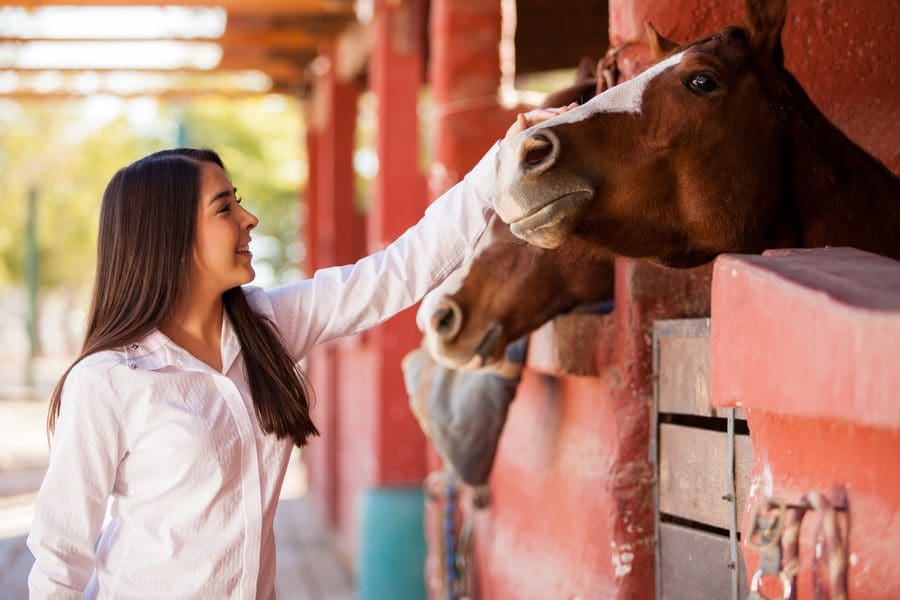Most people with pets can tell you that being in the company of animals affects them positively. But dogs and cats aren’t the only animals that can improve our mental health. Here is where equine (horse) therapy comes into play. Equine therapy is used to help with counseling, occupational or physical therapy, psychotherapy, and more.
Equine Therapy for Mental Health
In the mid-1900s, psychotherapists began using horse therapy to treat polio and other disabilities and mental health conditions. This led to the formation of the North American Riding for the Handicapped Association in 1969, later becoming the Professional Association of Therapeutic Horsemanship (PATH) International.
In horse therapy, a mental health professional collaborates with a horse specialist and specially trained horses to provide comprehensive care. Part of the treatment consists of individuals helping care for the horses instead of riding them. Usually, this type of therapy is used in addition to cognitive behavioral therapy (CBT) or experiential therapy.
Equestrian therapy demands selflessness, concentration, and teamwork. It can treat mental health conditions like anxiety, grief, depression, behavioral problems, and eating disorders. Horses are sensitive and observant; they reflect behavior and emotions without judgment. Instead, they can convey connection and, in a sense, understanding, putting a person at ease.
Horse Riding Therapy
Riding programs are commonly used for occupational or physical therapy. If someone can’t sit on the horse to ride it, there are ways to work around this, such as using a horse-and-buggy program.
People who may benefit from this form of horse therapy include those with Down syndrome, autism, or cerebral palsy; those who have had a stroke or traumatic brain injury; amputees; and those with other physical limitations. Riding and caring for horses helps patients with dexterity and endurance and builds balance and strength, which are often occupational therapy goals. Other benefits include coordination and rebuilding social connections and self-esteem through group participation.
Considerations
Depending on a person’s physical condition, it is advised to consult with a physician before trying equine therapy, especially if there has been a spinal injury or spina bifida. Other considerations include allergies (whether to the horse itself or the environment where patients go for horse therapy). Lastly, it is essential to remember that a horse is a large animal; if that causes you added anxiety or fear, equine therapy may not be for you.
If you want to find a horse therapy center, check out the Equine Therapy Directory to find your closest center.






